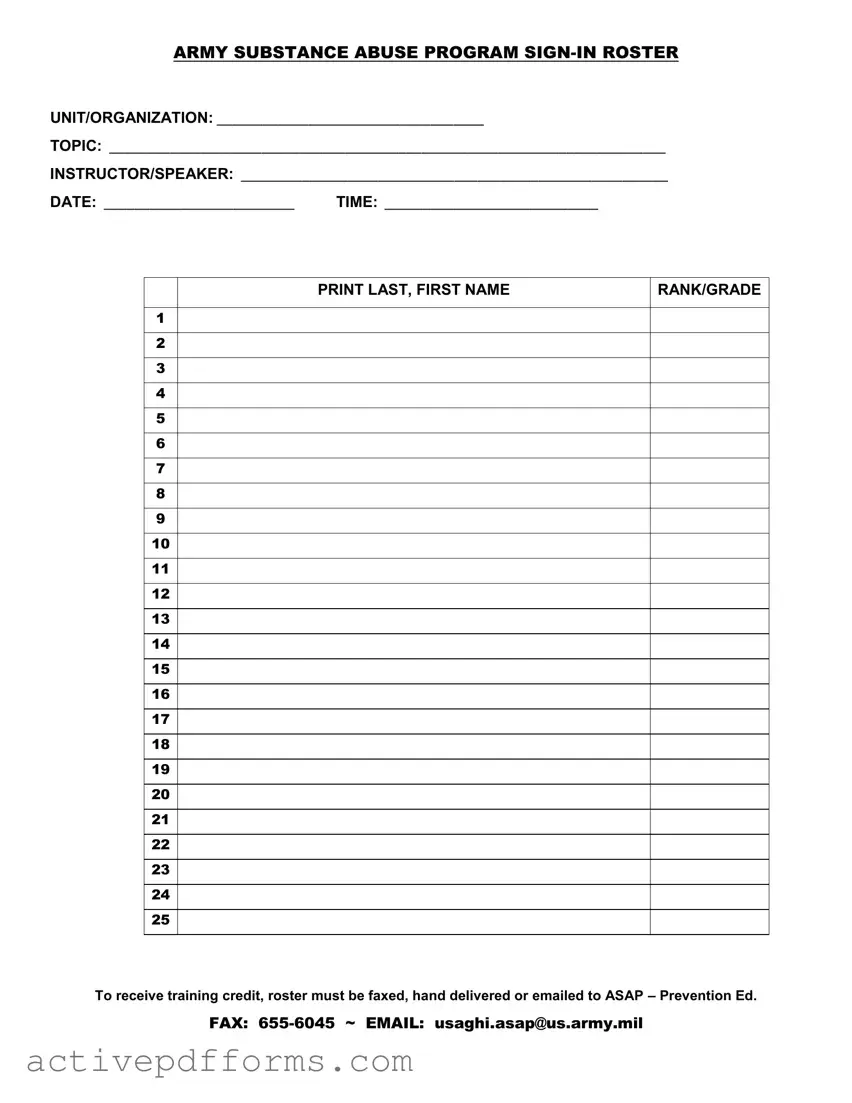In the realm of organizational efficiency and accountability, the Sign In Roster form stands out as a pivotal tool, especially within structured entities like the Army Substance Abuse Program (ASAP). Through this document, the facilitation of various sessions—ranging from educational workshops to mandatory training—is meticulously recorded. The form is designed to meticulously capture the attendance of participants, including their names and ranks or grades, underscoring the importance of their presence for record-keeping purposes and, crucially, for receiving training credit. Moreover, the detail with which the form outlines the requirement for it to be either faxed, hand-delivered, or emailed to the ASAP Prevention Education office demonstrates a rigorous adherence to procedural protocols. This approach not only ensures that the documentation of attendance is processed efficiently but also emphasizes the organization's commitment to maintaining high standards of accountability and verification. The form’s structured layout, which clearly specifies the unit or organization, topic of the session, instructor or speaker, date, and time, further streamlines the process, making it an indispensable part of the administrative framework within training programs. It serves as a bridge between the attendees and the administrative acknowledgment of their participation, which is a testament to the form's central role in the operational ecosystem of programs aimed at enhancing the professional and personal development of individuals within an organization.

